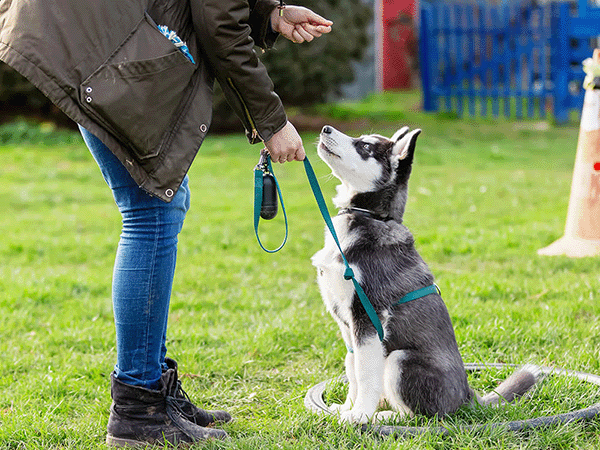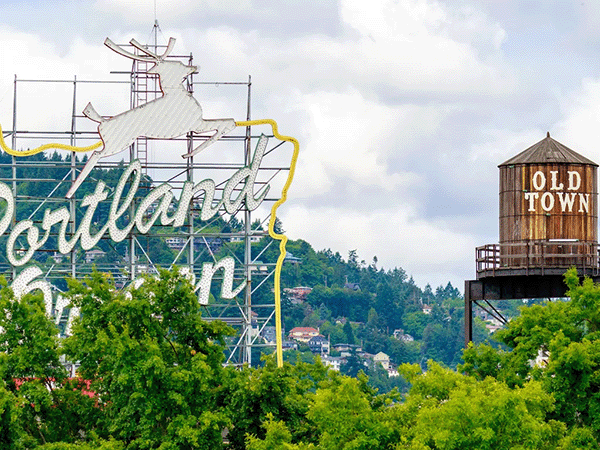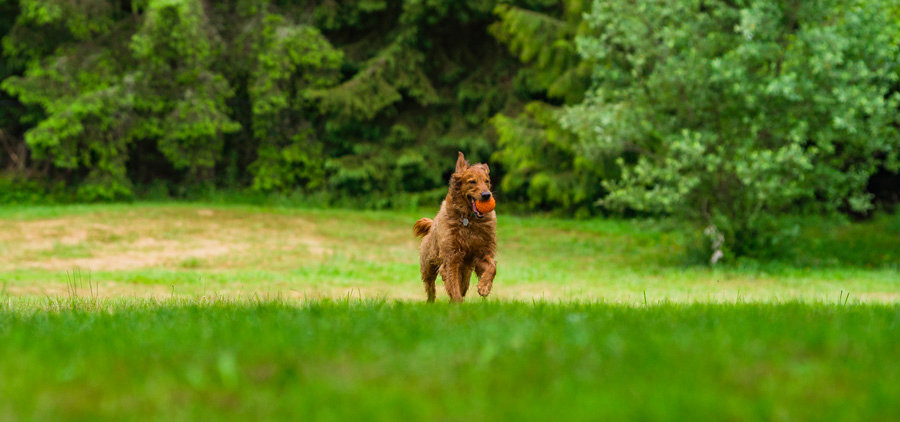Pomeranian Dog Breed Guide: Care, Temperament & More

Discover the Pomeranian, a breed celebrated for its friendly, intelligent, and loyal nature. Recognized as a small toy dog, Pomeranians have their origins in Germany, where they were initially bred for herding starting in the 18th century.
In this post, we share insights from nearly 100 Sniffspot Pomeranian owners, offering practical advice for new and prospective Pomeranian owners. Whether you’re considering adopting or rescuing a Pomeranian or already have one, you’ll find valuable tips on how to care for and enjoy life with a friendly Pomeranian.
Thinking about adding a Pomeranian dog to your life? These fluffy little dynamos are bursting with personality. But what's everyday life really like with a Pom? We asked nearly 100 Sniffspot Pomeranian owners to share their experiences. From temperament and training to grooming and health, we'll give you the inside scoop on Pomeranian dogs. Get ready to discover the real joys and challenges of Pom ownership!
Source: Sniffspot Community Breed Survey 2024
Pomeranian at a Glance
- Breed Type: Toy
- Size: Small
- Life Expectancy: 12 to 16
- Healthy Weight Range: 3 to 7
- Height Range: 6 to 7
- Temperament: Friendly, Intelligent, Loyal
- Coat Type: Long, double coat
- Color: Orange, black, white, cream, blue, brown, red, and a variety of other combinations
Key Takeaways
- Pomeranians are smart, social, and spirited: These petite pups are big on personality and love to be the center of attention. Early socialization and consistent training with positive reinforcement are key for a well-adjusted Pomeranian. They're generally great with kids, but supervision is always a good idea.
- Grooming is essential: A Pomeranian's gorgeous double coat requires a commitment to regular brushing, bathing, and trimming. Never shave a Pom, as their coat protects them from both heat and cold.
- Plan for moderate exercise and be aware of potential health issues: Pomeranians need regular physical activity and mental engagement to stay happy and healthy. Be mindful of common health concerns like dental and joint problems, and consider pet insurance. Choosing a responsible breeder is the first step towards a long, healthy life for your Pom.
Getting to Know the Pomeranian Dog
According to nearly 10,000 Sniffspot community users who shared real-world data about their Pomeranian, we learned that these dogs are friendly and intelligent. The Pomeranian is also known to be very friendly and social with children and cautious around new pets.
When living with a Pom, 65% of our owners indicated that a large house with a fenced yard is ideal. Additionally, 56% of owners found that a apartment or condominium with regular walks is also acceptable. This dog is moderately trainable, often benefiting from a professional trainer and owners say that the Pomeranian learns best with positive reinforcement, consistent routines, and socialization.
In terms of exercise, 35% of Sniffspot owners say their Pomeranian benefits from moderate exercise every day, including between 1-2 hours of activity each day, including walks and active play sessions. The Sniffspot Pom community would recommend this dog for first-time owners.
Origins of the Pomeranian
The Pomeranian, a small and lively breed, originated from the historical region of Pomerania, which lies on the coast of the Baltic Sea in present-day Germany and Poland. Despite their small size today, Pomeranians are descended from much larger spitz-type dogs that were originally bred for herding and sledding in Arctic regions. The breed became smaller over time, and its popularity skyrocketed during the 18th century when Queen Victoria of England fell in love with the breed, helping to popularize it as a fashionable companion dog.
Queen Victoria’s affection for Pomeranians is said to have inspired breeders to make the breed even smaller, solidifying its status as a toy breed. The modern Pomeranian we know today typically weighs between 3 and 7 pounds and retains its characteristic fluffy coat, erect ears, and fox-like face. Their compact size, combined with a vibrant and bold personality, made them especially popular among European aristocracy and the general public alike.
Today, Pomeranians are beloved for their intelligence, outgoing nature, and striking appearance. Despite their small stature, they maintain a big-dog attitude, often displaying high energy and a strong desire to be the center of attention. They thrive as companion dogs and can adapt well to various living environments, from city apartments to large homes.
Queen Victoria's Influence
Queen Victoria’s love for Pomeranians during the 19th century significantly increased their popularity, especially among the aristocracy. Her fondness for these lively little dogs elevated their status from working dog descendants to fashionable companions. This royal endorsement had a profound impact on the breed's development, as documented in Sniffspot's Community Breed Survey.
Queen Victoria’s preference for smaller Poms encouraged breeders to miniaturize the breed, solidifying its classification as a toy breed. This shift not only changed the Pomeranian's size but also enhanced its appeal. Their compact size and vibrant personalities, combined with royal approval, made them favorites among both the elite and the general public, as our survey data confirms. This royal influence shaped the Pomeranian into the charming companion we know and adore today.
Pomeranian Temperament and Traits
- Temperament: Friendly, Intelligent, Loyal
- Energy Level: Moderate
- Trainability: Moderately trainable – Learns commands with consistent training and practice.
- Grooming needs: High maintenance – Requires frequent grooming, including regular brushing, bathing, and trimming.
- Good with Kids: Very friendly and social with children
- Good with Other Pets: Cautious around new pets
Personality Nuances
Vocalizations and Sassy Behavior
Pomeranians are often described as cute and lovable, but they also have a sassy and sometimes bossy side. They can be quite vocal, letting you know exactly what they want (and don't want!). While intelligent, they can also be willful, sometimes acting more like "little people" than typical dogs, as some owners have noted in online discussions about the breed.
Stubbornness and Willfulness
That independent streak can sometimes translate into stubbornness. While training is possible, it requires patience and consistency. Positive reinforcement methods generally work best. Because of their strong preferences and occasional sensitivity to rough handling, Pomeranians may not be the ideal choice for households with very young children, according to some Pomeranian owners.
Picky Eating Habits
While not all Pomeranians are picky eaters, it's something to be aware of. They can have definite opinions about their food, so finding the right dog food might take some experimentation. Our Sniffspot community survey revealed that Pomeranians are generally friendly and social with children and cautious around new pets. If you're looking for places to socialize your Pomeranian with other dogs, check out the dog parks on Sniffspot.
Suitability for Families with Children
Pomeranians can be good family dogs, especially if raised with children. However, because of their small size, they can be easily injured by accidental roughhousing. Supervision is always key when small children and Pomeranians interact. Veterinary resources often recommend teaching children how to handle small dogs gently and respectfully.
Their perky and friendly nature makes them fun companions, but that same boldness can sometimes lead to stubbornness. They are alert and can make good watchdogs, but their tendency to bark might require some training. Early socialization is important to help them become well-adjusted adults. Sniffspot can be a great resource for finding safe and controlled environments for socializing your Pomeranian.
Pomeranian Ownership: What to Expect
As a Pomeranian owner, it’s important to know the best dog breed tips and what to expect from current Pomeranian owners.

Source: Sniffspot Community Breed Research 2024
Pomeranian Grooming Guide
Pomeranian dogs require high maintenance grooming. This means Pomeranian owners should expect frequent grooming, including regular brushing, bathing, and trimming. Pomeranian dogs have a long, double coat, which is ideal for insulation from cold weather. Their long, double coat is considered moderate shed.
To keep your Pomeranian’s coat healthy and up to breed standards, brush at least twice a week to avoid matting. Of the coat types for breeds in the toy group, the grooming needs for Pomeranian are considered to be high maintenance.
Shedding and Coat Care
Pomeranians have a luxurious, fluffy double coat that requires regular care to prevent matting and keep it looking its best. While their double coat is considered a moderate shed, regular brushing is key. Aim for at least twice a week, paying close attention to areas prone to tangles, like behind the ears and under the legs. This consistent grooming routine will not only keep your Pom looking fabulous but also minimize the amount of fur you’ll find around your home.
Bathing your Pomeranian every few weeks will help keep their coat clean and fresh. Be sure to use a dog-specific shampoo and conditioner to avoid skin irritation. After bath time, thorough drying is essential. Towel drying followed by a gentle blow-dry (on a cool setting) will prevent chills and help maintain that signature Pomeranian fluff. Remember, neglecting regular brushing can lead to matting, which can be uncomfortable for your dog and might require a professional groomer to fix.
Trimming vs. Shaving
Regular trims are an important part of Pomeranian coat maintenance. Trimming helps keep their coat neat, prevents matting, and can even enhance their overall appearance. Many Pomeranian owners opt for professional grooming every few months to maintain the breed's distinctive look. A professional groomer can also provide valuable advice on at-home grooming techniques.
It's crucial to understand that you should never shave a Pomeranian. Their double coat plays a vital role in regulating their body temperature, protecting them from both heat and cold. Shaving disrupts this natural insulation and can lead to skin problems and difficulty regulating body temperature. Trimming, on the other hand, maintains the coat's protective qualities while keeping it manageable. If you're unsure about how to trim your Pomeranian's coat, consult a professional groomer for guidance. They can show you the proper techniques and recommend the right tools.
Exercise Essentials for Your Pomeranian
Pomeranians require moderate activity each day. Though one of the most popular dog breeds, Poms are considered a very athletic, high-energy breed. Poms make great pets and thrive with between 1-2 hours of activity each day, including walks and active play sessions. Owners of Poms report their dogs especially love playing with squeaky toys, puzzle toys, and running/jogging.
When small breeds like Poms don’t get sufficient exercise, they’re more likely to act out with undesirable behaviors like excessive barking, stubbornness, and separation anxiety. They need consistent training, mental activity, and regular moderate exercise to avoid excess energy.
Feeding Your Pomeranian
What should you feed your Pomeranian to keep them healthy? As a moderate energy breed, what you feed them is important. A reported 35% of our community feed their Pom commercial dry kibble.
With moderate exercise, Poms should eat 0.25 to 0.5 cups of vet-recommended food to maintain a healthy weight of around 3 to 7 lbs. However, your Pomeranian’s ideal weight and food depend on your pet’s sex, activity level, and age.
Dietary Needs
Pomeranians are a moderate energy breed, so their diet plays a key role in their overall health. A reported 35% of our community feed their Pomeranian commercial dry dog food, a popular choice among owners. Whether you opt for kibble, wet food, or a mix, make sure it meets the nutritional needs of a small, active breed. Prioritize formulas with high-quality protein, healthy fats, and essential vitamins and minerals. Avoid foods with fillers, artificial colors, and excessive grains, as these can lead to weight gain and other health problems.
Talk to your veterinarian to figure out the best diet for your Pomeranian. Factors like their age, activity level, and any specific health concerns will influence their dietary needs. Your vet can help you choose a food that supports their well-being and helps maintain a healthy weight. The WSAVA also offers helpful resources on dog nutrition.
Puppy Food Considerations
Feeding Pomeranian puppies the right amount of food is essential for healthy growth. With moderate exercise, Pomeranians typically eat between 0.25 to 0.5 cups of vet-recommended food to maintain a healthy weight of around 3 to 7 lbs. However, the ideal weight and food portion can differ based on the puppy’s sex, activity level, and age. Puppies need more frequent meals than adult dogs—usually three to four times a day—to fuel their rapid development. You can gradually decrease this to two meals a day as they get older.
Select a puppy food designed for small breeds, as these formulas often have higher protein and calorie levels to match their energy needs. Keep an eye on your puppy's weight and adjust their food as needed to prevent them from becoming overweight or underweight. Regular vet checkups are important during puppyhood to ensure they're growing well and getting proper nutrition.
Preventing Obesity
Enough exercise is crucial for preventing obesity in Pomeranians. Owners report that their dogs benefit from moderate exercise daily, around 1-2 hours of activities like walks and active play. Safe, enclosed dog parks offer a great way to provide a stimulating environment for exercise and socialization. Without enough exercise, small breeds like Pomeranians are more prone to unwanted behaviors like excessive barking, stubbornness, and separation anxiety.
Along with exercise, portion control is essential for weight management. Follow the guidelines on your dog food packaging and check with your vet to determine the right portion size for your Pomeranian. Limit treats and table scraps, as these add extra calories. Regularly weigh your Pomeranian and adjust their food intake to keep them at a healthy weight. A balanced diet and plenty of exercise will help your Pomeranian live a long, healthy, and happy life.
Pomeranian Health: What to Watch For
The Pomeranian breed is most prone to dental problems (e.g., periodontal disease, tooth decay) and joint problems (e.g., hip dysplasia, arthritis). A reported 47% of our Pomeranian owners note dental problems like periodontal disease, dental calculous, tooth loss, bad breath, or an oral infection are common for their pets. Pom’s risk for these challenges increases as they age.
Similarly, 30% reported joint problems like arthritis, elbow dysplasia, degenerative issues, and osteosarcoma. Lastly, 26% of Pomeranian owners claim their dog struggles with skin conditions like allergies, yeast infections, impetigo, ringworm, alopecia, and folliculitis — a common Pom health concern. If you’re worried about any of these health issues above, talk to your Pom’s vet.
Common Health Issues
While Pomeranians are generally healthy, they are predisposed to certain health conditions. Being aware of these potential issues can help you provide the best possible care for your Pom.
Alopecia X
Alopecia X, sometimes called “black skin disease,” is a skin disorder that causes hair loss, often leading to bald patches. The exact cause is unknown, but it’s thought to be related to hormone imbalances. Learn more about Pomeranian health concerns.
Patellar Luxation
This is a common problem in small breeds like Pomeranians, where the kneecap (patella) slips out of its normal position. It can cause lameness and discomfort.
Congenital Portosystemic Shunt
This liver disorder affects blood flow, preventing the liver from properly filtering toxins. Symptoms can include stunted growth and neurological issues. Learn more about portosystemic shunts.
Gallbladder Mucocoele
Gallbladder mucoceles occur when the gallbladder fills with thick mucus, potentially leading to inflammation and infection. Symptoms can include vomiting, lethargy, and abdominal pain.
Atlantoaxial Subluxation
This condition involves instability in the first two vertebrae of the neck (the atlas and axis), which can cause pain and neurological problems. It's important to handle Pomeranians gently, especially around the neck area.
Tracheal Collapse
The trachea (windpipe) can weaken and collapse, making it difficult for the dog to breathe. This is often exacerbated by excitement or pulling on the leash. Using a harness instead of a collar can help reduce pressure on the trachea.
Cryptorchidism
This condition affects male dogs and refers to one or both testicles failing to descend into the scrotum. It can increase the risk of testicular cancer.
Merle-Related Issues
The merle gene, which creates a mottled coat color, can be associated with eye and ear problems, as well as other health issues, in Pomeranians and other breeds.
Hypoglycemia
Hypoglycemia, or low blood sugar, can be a concern, especially in Pomeranian puppies. Symptoms include weakness, lethargy, and tremors.
Importance of Responsible Breeding
Choosing a responsible breeder is crucial for minimizing the risk of these health issues. Responsible breeders screen their dogs for genetic conditions and prioritize the health and well-being of their puppies. Learn more about responsible dog breeding.
Discussing Health History with Breeders
Always discuss the health history of the parents and grandparents with the breeder. A reputable breeder will be open and honest about any health concerns in their lines.
Pet Insurance Recommendation
Given the potential for health issues, pet insurance can be a wise investment for Pomeranian owners. It can help cover the costs of unexpected veterinary care, providing peace of mind.
Are Pomeranians Friendly?
Another important thing to consider when adopting a Pom is whether or not this breed fits with your current family. How friendly are Pomeranians compared to other small-sized breeds?

Source: Sniffspot Community Breed Survey 2024
With moderate training, you can hone your Pom’s toy instinct into a friendly and intelligent family dog. Introducing your pet to positive reinforcement (treats, praise, rewards) and consistent daily training routines early helps them avoid undesirable behaviors like barking, stubbornness, and separation anxiety. Our community Pomeranian owners comment on their pet’s friendliness:
- I like how easily trainable they are so that they can always be learning new tricks. (Anon)
- She’s obnoxiously energetic. She never sits still, is always down to play or be pet. (Kiko)
- He’s always up for anything! (Anon)

Courtney Vitale on Unsplash
Training Your Pomeranian
Whether you’re adopting a Pom puppy or an adult Pomeranian, training is a significant part of owning a small-sized breed. Without proper training, your Pom is more likely to display undesirable behaviors such as barking, stubbornness, and separation anxiety. Providing stimulating activities is a great first step, but this needs to be paired with the right training for your Pom.
As a toy breed, Pomeranians benefit from praise and positive reinforcement. Here’s what our Pom community recommended based on their experience with their own dogs:
- Positive Reinforcement (93%): This includes treats, praise, rewards, and so on for positive behavior
- Consistent Routines (40%): A consistent training routine allows your pet to get comfortable with expectations
- Socialization (37%): Socializing your dog with other pets, dogs, and people prepares them to interact with the world
As dogs bred for herding, Poms are considered moderately trainable, often benefiting from a professional trainer.
Importance of Early Training and Socialization
Early training and socialization are crucial for Pomeranians. Starting training early, while they are still puppies, helps establish good behavior patterns and prevents undesirable habits from developing. Positive reinforcement, like treats and praise, is highly effective. Our Sniffspot Community Breed Survey found that 93% of Pom owners recommend this approach! This positive approach makes training more enjoyable for both you and your Pom.
Socialization is equally important. Exposing your Pomeranian to various people, places, and other animals—especially during puppyhood—helps them become well-adjusted adults. This reduces the likelihood of fear-based behaviors like excessive barking or aggression. A well-socialized Pom is more likely to be confident and comfortable in different situations. Consider taking your Pom to Sniffspot dog parks to socialize with other dogs in a safe and controlled environment.
Housebreaking Challenges
Housebreaking a Pomeranian can sometimes be challenging. Their small size can make it difficult to spot accidents. Their independent nature might mean they take a little longer to grasp the concept. Consistency is key. Establish a regular potty break schedule and stick to it. A predictable routine helps your Pom understand what's expected. The Sniffspot Community Breed Survey found that 40% of Pom owners emphasized the importance of consistent routines.
If you're struggling with housebreaking, don't get discouraged. Positive reinforcement methods, patience, and a consistent routine will eventually pay off. If you're facing persistent challenges, consider consulting a professional dog trainer for personalized guidance. Remember, even with challenges, the companionship of a Pom is worth the effort!
Why Pomeranian Owners Adore Their Dogs
We asked Sniffspot Pom owners what they love the most about their Pomeranian pups, and here’s what they had to say:
- They are full of fun energy and attitude and are just adorable all the way around. (Anon)
- Pierre is a rescue Pomeranian mix. His breed makes him naturally loyal and protective of his human and environment (including his rescue horse brother). He’s all bark and no bite making him a great teacher to people scared of dogs (and a LOUD deterrent to sketchy people approaching the car). He’s the guard dog no one asked for but everyone needs. (Maya + Pierre the pup)
- His energy and playfulness. He could play fetch for 4 hours if we let him. (Fiona)
Challenges of Pomeranian Ownership
Similarly, Pom owners shared some of the biggest challenges of living with their Pomeranian:
- Independence makes training challenging sometimes, noisy alert dogs! (Kezia)
- Maintaining their coat can be difficult or expensive, especially in the summer months, and just being aware of their size and making sure you don’t overfeed. They tend to have dental problems earlier than most dogs. They have a tendency to be talkative as well, which may annoy neighbors. (Anon)
- The Velcro nature of the breed makes it tough to train sometimes. He’s so locked in on you, you can’t get space. Our professional trainer says she’s training Pierre with the opposite of what dog owners usually need (“stay away from me” instead of “come back to me”). Their spatial awareness is challenging. (Maya + Pierre the pup)
Is a Pomeranian Right for You?

Source: Sniffspot 2024 Community Dog Breed Survey
According to 72% of our Sniffspot community, Pomeranians are a great first-time dog. This comes from their friendly nature and moderate exercise needs. Pomeranian owners say it best:
- His energy and playfulness. He could play fetch for 4 hours if we let him. (Fiona)
- I like how easily trainable they are so that they can always be learning new tricks. (Anon)
- She’s obnoxiously energetic. She never sits still, is always down to play or be pet. (Kiko)
Considering Temperament, Size, and Care Needs
Pomeranians are known for their friendly, intelligent, and loyal temperament. They're generally great with kids and can be a bit cautious around new pets, which makes them a wonderful addition to many families. As one Sniffspot community member noted, "With moderate training, you can hone your Pom’s toy instinct into a friendly and intelligent family dog." This highlights the importance of early socialization and positive reinforcement training.
Size-wise, Pomeranians are a small toy breed, typically weighing between three and seven pounds and standing seven to twelve inches tall. Despite their small stature, they have big personalities and a bit of a "big dog" attitude. They often have lots of energy and love being the center of attention. You can find more details on the breed standard at the Wikipedia page for Pomeranians.
When it comes to care, Pomeranians require a fair amount of grooming because of their long, double coat. Owners should be prepared for frequent brushing, bathing, and trimming to keep their Pom's coat healthy and prevent matting. Our Sniffspot Community Breed Survey indicated that most owners recommend brushing at least twice a week. Pomeranians also benefit from moderate exercise—around one to two hours of activity each day, including walks, playtime, and visits to Sniffspot dog parks.
Tips for Pomeranian Owners
Luckily, our Sniffspot community is full of experienced, trustworthy Pom owners. These Pomeranian breed owners share the most essential dog breed tips and advice for prospective or new dog owners:
Finding a Reputable Breeder
Finding a reputable Pomeranian breeder is crucial for ensuring your puppy is healthy, well-socialized, and bred responsibly. Ethical breeders prioritize the breed's health, temperament, and overall well-being, not profit. They're deeply committed to the Pomeranian breed and spend considerable time working with these charming dogs. A good breeder will be knowledgeable about Pomeranian names, breed standards, and happy to answer your questions.
Start your search by researching breeders online. The Pomeranian Breeder Directory is a valuable resource for finding AKC-registered Pomeranian breeders near you. Also check out Belle House Pomeranians and Pretty Pomeranian for more tips on finding reputable breeders and avoiding common pitfalls. You can also find dog parks near you through Sniffspot to connect with other Pomeranian owners and potentially find breeder recommendations.
When you contact a breeder, ask about their breeding practices, the health testing they perform on their dogs, and how they socialize their puppies. Be wary of breeders who prioritize profit over proper care, like puppy mills and some pet stores. NAHF offers helpful guidance on selecting a Pomeranian breeder and ensuring you bring home a healthy, happy pet. Remember, choosing a responsible breeder is the first step in welcoming a well-adjusted Pomeranian into your life and sets the stage for a positive experience at places like dog water parks and other fun activities.
Big Personality in a Small Package: What to Expect
- Prepare for a real dog! Some Pomeranians are content as a lap dog, but I have found most are not. Mine are high energy both physically and mentally. (Kezia)
- Do your research, meet the breed, ask good questions. They are small and adorable but have big attitudes and feelings. (Deb)
Early Training is Key (Especially for Barking)
- Work on barking behaviour right away, otherwise your neighbours are going to hate you. And just because they are smaller breeds, don’t underestimate the level of exercise and energy draining Pomeranians need especially for preventive health. Find outlets that work for your dog – it may be fetch, it may be tug, it may be games, it may be sniffing… (Maya + Pierre the pup)
- Be ready to train young and be willing to listen to lots of barking. (KR)
Grooming and Dental Care for Your Pomeranian
- Just make sure you can afford regular grooming and dental care. (Anon)
- Make sure you research everything and understand the grooming requirements. (SC)
Socialization Tips for Your Pomeranian
- Need to socialize early with lots of training and some shedding. (Jeannette)
- Treat them like a large dog and socialize in all environments. (Brytany)
Cost of Owning a Pomeranian
Bringing a Pomeranian into your life is a big decision, and it's essential to understand the financial commitment. Like any pet, Pomeranians have costs that extend beyond the initial purchase price. Let's break down the expenses you can expect so you can plan accordingly.
The initial purchase price for a Pomeranian puppy can range from $600 to $6,000, depending on the breeder's reputation, the dog's lineage, and other factors. Adopting or rescuing a Pomeranian is generally less expensive and a wonderful way to give a dog a loving home. However, even with adoption, there are fees involved, so be sure to check with your local shelters and rescue organizations.
Beyond the initial cost, the first year of Pomeranian ownership typically requires between $4,780 and $6,080, according to A-Z Animals. This covers essential expenses like initial vet visits, vaccinations, spaying/neutering, food, toys, a bed, leash, collar, and potentially training classes. Professional training can be especially helpful with Pomeranians, as they can sometimes be stubborn learners. For example, training can help address excessive barking, a common trait among Pomeranians.
After the first year, you can anticipate annual costs of around $2,000 or more. This covers recurring expenses like food, treats, toys, grooming, routine vet checkups, flea and tick prevention, and other necessities. Grooming can be a significant ongoing expense for Pomeranians due to their thick double coats. Regular brushing and occasional professional grooming are essential to prevent matting and maintain their coat's health. You can find helpful dog grooming tips and resources online.
Over your Pomeranian's lifespan of 13 to 16 years, the total cost of ownership can range from $109,475 to $141,545, as estimated by Pawsome Authority. This comprehensive estimate includes everything from food and healthcare to grooming and other living expenses. It's important to remember that these are estimates, and the actual cost can vary depending on your dog's individual needs and your lifestyle choices. Unexpected vet bills can also arise, so consider pet insurance to help manage these costs.
While these figures might seem daunting, remember that the joy and companionship a Pomeranian brings are often priceless. By understanding the financial commitment upfront and budgeting accordingly, you can ensure a happy and healthy life for your furry friend. Consider exploring resources like Sniffspot's dog parks to find affordable ways to enrich your Pomeranian's life with fun and stimulating activities. Sniffspot offers a variety of dog-friendly spaces, including dog parks, trails, and even water parks, providing opportunities for exercise and socialization.
Frequently Asked Questions about the Pomeranian
Pomeranian Lifespan
The average lifespan of a Pomeranian is typically between 12 to 16 years.
Pomeranian Size and Weight
An adult Pomeranian weighs between 3 to 7 pounds and stands between 6 to 7 inches tall.
"Teacup" Pomeranians: Myth vs. Reality
The term "Teacup" Pomeranian is often used to describe exceptionally small Poms, but it isn't an official size recognized by any kennel club. According to the Sniffspot Community Breed Survey, a Pomeranian typically weighs between 3 and 7 pounds, which is already small for a dog. While their compact size and lively personality make them popular, the idea of a "Teacup" Pomeranian can lead to misunderstandings about their health and care.
Pomeranians descended from much larger spitz-type dogs bred for herding and sledding in Arctic regions. Over time, selective breeding resulted in the smaller size we see today. Queen Victoria's love for the breed in the 19th century further popularized the Pomeranian as a fashionable companion, leading to the development of the toy-sized version we know and love. However, striving for even tinier dogs can sometimes compromise their health and well-being. You can learn more about Pomeranian history, including Queen Victoria's influence, on the Ollie blog.
Be cautious of breeders promoting "Teacup" Pomeranians. These dogs may be more prone to health problems and may not meet breed standards. Responsible breeders prioritize a dog's health and temperament over size, ensuring that Pomeranians remain the friendly, intelligent, and loyal companions we adore.
Pomeranian Grooming Frequency
Pomeranian dogs require high maintenance grooming. Regular grooming helps to keep their coat healthy and manageable. Pomeranian dogs have a long, double coat, which is well-suited for insulation from cold weather. They are considered moderate shedders.
To maintain your Pomeranian’s coat, it’s important to brush at least twice a week to avoid matting. Among toy breeds, Pomeranian grooming is categorized as more complicated.
Pomeranian Exercise Requirements
Pomeranians require moderate activity each day. Though one of the most popular dog breeds, Poms are classified as a moderately athletic, somewhat high-energy breed.
Poms are excellent companions and thrive with between 1-2 hours of activity each day, including walks and active play sessions. Owners of Poms note that their dogs particularly enjoy playing with squeaky toys, puzzle toys, and running/jogging.
If small breeds like Poms don’t receive enough exercise, they may develop unwanted behaviors. These dogs need ongoing training, mental stimulation, and consistent exercise to channel their energy effectively.
Are Pomeranians Good with Children?
According to our data, Pomeranians are very friendly and social with children with children.
Do Pomeranians Get Along with Other Pets?
Our research indicates that Pomeranians are cautious around new pets with other pets.
Best Food Choices for a Healthy Pomeranian
As a moderate energy breed, the diet of your Pom is crucial. A significant 35% of our community feed their Pom commercial dry kibble.
For optimal health, Poms should consume 0.25 to 0.5 cups of vet-recommended food to maintain a healthy weight around 3 to 7 pounds. The exact amount and type of food will depend on your Pomeranian’s sex, activity level, and age.
Common Pomeranian Health Issues
The Pomeranian breed is particularly prone to dental problems like periodontal disease, dental calculous, tooth loss, bad breath, or an oral infection and joint problems like arthritis, elbow dysplasia, degenerative issues, and osteosarcoma. Our data shows that 47% of Pomeranian owners reported dental problems like periodontal disease, dental calculous, tooth loss, bad breath, or an oral infection. Pom’s risk for these health issues increases as they age.
Additionally, 30% reported joint problems like arthritis, elbow dysplasia, degenerative issues, and osteosarcoma. Finally, 26% of Pomeranian owners indicated their dog struggles with skin conditions like allergies, yeast infections, impetigo, ringworm, alopecia, and folliculitis, which are common Pom health concerns. If you have concerns about any of these health issues, consult your Pom’s veterinarian.
Helpful Resources for Pomeranian Owners
Whether you’re a current Pomeranian dog owner or you’re considering adopting a Pom, Sniffspot is here to lend a helping hand. Here are some of the most relevant resources for Pomeranian owners.
- Most Popular Names for Pomeranians
- Best Small Dog Rescues and Shelters
- American Pomeranian Club
Sources:
Most recent articles
Related articles
Top dog guides per area
Dog training guides

Dog Food Aggression: Why You Shouldn't Punish It
Does your dog ever growl when you walk by their food dish? Maybe they get possessive of treats, carrying them far away and giving you side-eye when you start to approach — or snarling at your other pets or children if they get too close.

Best Dog Fields in the US: 25+ Wide-Open Spaces for Your Pup to Run Free
The best dog fields in the US offer something that traditional enclosed parks simply can't match: acres of open space where your pup can truly stretch their legs and run at full speed. From Colorado's 470-acre prairie meadows to Tennessee's award-winning "Outback," these wide-open spaces allow dogs to roam, explore, and exercise naturally while engaging instincts that cramped urban parks suppress.

The Ultimate Guide to Scent Training for Dogs
Your dog's nose is an amazing tool. Did you know they have 40 times the olfactory receptors than humans? Scent training for dogs taps into this superpower, turning everyday moments into exciting sniff-fests. It's enriching for all types of dogs – reactive, shy, or simply adventurous. Ready to explore the world of scent work for dogs? Let's get started.

Service Dog Training Costs: DIY vs. Pro
More than 80 million Americans rely on their service dogs to help them navigate the world. Task-trained assistance animals perform a huge range of life-changing—in many cases, life-saving—services: These dogs act as eyes for visually impaired handlers, provide mobility support, alert to seizures and blood sugar crashes, interrupt anxiety attacks, remind their people to take medications, and so much more.

How to Deal With Puppy Potty Training Regression
You thought those dreaded middle-of-the-night potty breaks were over. You were finally free from cleaning up puppy puddles. Then, suddenly, your furry friend starts having accidents again. It's frustrating, right? This puppy potty training regression is more common than you think. Don't worry; we'll help you get your pup back on track. We'll cover the common causes, offer practical solutions, and give you actionable steps to tackle this challenge together.

Dirty Dog Syndrome: Causes, Solutions, and Prevention
It's a cringe-worthy moment every dog owner dreads: your furry friend chowing down on something truly disgusting. If your dog has a penchant for poop, you're dealing with coprophagia. It's more common than you think, and thankfully, often manageable. This article explores the reasons behind dirty dog syndrome, from instinct to learned behavior. We'll also give you practical tips to help break this unpleasant habit.

How to Train Your Rescue Dog: A Complete Guide
* All Sniffspot articles are reviewed by certified trainers for quality, please see bottom of article for details *
Dog enrichment guides

Best Dog Water Parks in the US: 15+ Amazing Splash Destinations for Your Pup
Do you have a water-loving dog looking to burn some energy? There are countless dog parks to visit throughout our country — but some of them become far too hot in the midday sun to be safe for your pets to play. That’s why we’ve put together a list of some of the best dog water parks throughout the United States! At these locations, your pup can frolic, splash, and swim to their heart’s content.

Best Dog Fields in the US: 25+ Wide-Open Spaces for Your Pup to Run Free
The best dog fields in the US offer something that traditional enclosed parks simply can't match: acres of open space where your pup can truly stretch their legs and run at full speed. From Colorado's 470-acre prairie meadows to Tennessee's award-winning "Outback," these wide-open spaces allow dogs to roam, explore, and exercise naturally while engaging instincts that cramped urban parks suppress.

Best Toys for Herding Dogs: Keeping Your Pup Happy & Engaged
Herding dogs are amazing, intelligent companions. But that also means they need more than just a simple game of fetch. Finding the right toys for herding dogs is key to keeping them happy and stimulated. This article explores some of the best toys for herding dogs, including options specifically for breeds like Border Collies and Australian Shepherds. We'll help you discover the perfect herding toys for dogs to tap into their natural instincts and keep them entertained for hours.

Tough Dog Toys for Aggressive Chewers: A Practical Guide
Does your dog destroy every toy you give them? Is your house littered with the remnants of plush toys? Are you tired of wasting money on "indestructible" dog toys for aggressive chewers that don't last? Then this post is for you. We'll cover everything you need to know about finding the best dog toys for aggressive chewers, so you can finally give your pup something safe, durable, and fun.

Daily Exercise Calculator: How Much Exercise Does Your Dog Need?
Everyone knows dogs need exercise, but how much is enough? Walks are great, but creating a truly balanced fitness plan means understanding your dog's specific needs. This post helps you develop a daily exercise calculator for your dog, considering breed, age, and lifestyle. We'll cover fun activities, understanding exercise intensity, and recognizing when your pup has had enough. Let's create a plan that keeps your dog happy and healthy!

Complete Guide To Herding With Dogs
* All Sniffspot articles are reviewed by certified trainers for quality, please see bottom of article for details *

Dog Enrichment Activities: The Ultimate Guide
Ever feel like your dog is restless or bored? They may be getting enough exercise, but still need more. That's where enrichment activities for dogs come in. Giving your dog opportunities to sniff, explore, and problem-solve can make a world of difference. Whether you have a puppy, adult, or senior dog, enriching their environment is key for their well-being. Let's explore how to add cognitive enrichment for dogs, even tailoring activities to your dog's breed with breed specific enrichment and fun enrichment games for dogs.
Dog reactivity guides

Rottweiler Aggression: Truth vs. Myth
Many dogs have gotten a bad reputation over the years for being "dangerous breeds." Rottweilers are among them. Like pit bulls and other large, blocky-headed types of dogs, these powerful and beautiful animals are often assumed to be aggressive.

Best Dog Fields in the US: 25+ Wide-Open Spaces for Your Pup to Run Free
The best dog fields in the US offer something that traditional enclosed parks simply can't match: acres of open space where your pup can truly stretch their legs and run at full speed. From Colorado's 470-acre prairie meadows to Tennessee's award-winning "Outback," these wide-open spaces allow dogs to roam, explore, and exercise naturally while engaging instincts that cramped urban parks suppress.

What Is a Reactive Dog? A Practical Guide for Owners
Does your dog suddenly transform into a barking, lunging Tasmanian devil on walks? It's stressful for both of you. If this sounds familiar, you might have a reactive dog. Understanding what is a reactive dog is the first step to calmer walks. We'll explore the common triggers and give you actionable strategies to manage and modify this behavior. Let's turn those stressful walks into enjoyable outings.

How to Socialize a Reactive Dog: A Step-by-Step Guide
Does your dog display reactivity to other pets or people? Maybe they’re a new rescue pup and are still settling into your home. Or they were sick growing up, so you missed their critical socialization period. Possibly they’ve had a bad experience after being raised as a normal puppy.

What Is a Reactive Dog? A Complete Guide
Is your dog overly excited or fearful around other dogs? Do they bark, lunge, or whine? You might have a reactive dog. Many dog owners face this challenge. Understanding what a reactive dog is is the first step to helping them. This guide explores the common causes of dog reactivity, explains what makes a dog reactive, and offers practical tips and resources. Let's work together to build a stronger bond with your dog and enjoy stress-free walks.

Best Online Dog Training for Reactive Dogs: A Practical Guide
Does your dog's reactivity make walks stressful? You're not alone. Many dog owners face similar challenges. This guide offers practical advice and support for managing reactivity, including finding the best online dog training for reactive dogs. We'll connect you with reactive dog support groups, share training tips, and explore resources like the best dog training app for reactive dogs. Let's build a stronger bond with your dog, together.
* All Sniffspot articles are reviewed by certified trainers for quality, please see bottom of article for details *
How To Groom a Reactive Dog
* All Sniffspot articles are reviewed by certified trainers for quality, please see bottom of article for details *
Sniffspot community guides

The State of Public Dog Parks Across the United States
From 2009 to 2020, there was a 40 percent increase in the development of public dog parks. Designated spots for canine exercise have become commonplace in every major city in North America — many pet owners won’t even consider renting an apartment that doesn’t have its own fenced-in pet area for their canine companions.

Best Dog Fields in the US: 25+ Wide-Open Spaces for Your Pup to Run Free
The best dog fields in the US offer something that traditional enclosed parks simply can't match: acres of open space where your pup can truly stretch their legs and run at full speed. From Colorado's 470-acre prairie meadows to Tennessee's award-winning "Outback," these wide-open spaces allow dogs to roam, explore, and exercise naturally while engaging instincts that cramped urban parks suppress.

How This Family is Affording Their Dream Property Through Renting it Hourly to Dogs
Thousand Oaks, California has been a safe haven for Sniffspot host, Jen, since childhood. Having grown up in busy Santa Barbara, Jen, an introvert from an early age, would seek out solitude and serenity away from tourists attractions and droves of people visiting from elsewhere. “My grandparents own 60 acres about a 30 minute drive from here, and I grew up spending every summer and every holiday visiting them on the ranch,” Jen explained. “In Santa Barbara, we wouldn't go to the beach on the weekend because that's where everybody was, so you'd find places off the beaten path where the tourists weren't. For me, the ranch was just my happy place.”

Host Tips: Ellen K. What Makes Sniffspot Successful for Me
Ellen is the host of Country Pasture Getaway, one of Sniffspot's most popular sniff spots. She has taken the time to write up the lessons she has learned about how to be a great sniff spot host.

How this Oregon Farmer is Making a Business From Renting Her Land to Dogs
Just 20 minutes outside of the busy city of Portland, Oregon, and settled right on the banks of the Columbia River, you’ll find what countless visitors have flocked to the area in search of – mountain views, crisp, clean air, and running water for miles. What you might not expect to find, however, is a hidden oasis designed just for dogs and their people, owned and operated by a farming couple and enjoyed by visitors on two legs, and four.

Host Tips: Fran T. Providing Great Guest Service at our Spot
Fran is the host of Ranch Setting, one of Sniffspot's most popular spots. She has taken the time to write up the lessons she has learned about how to be a great Sniffspot host.

How Sniffspot Helped a Nervous Rescue Work Through His Fears and Change His Family’s Life
This is the story of a family and dog rescuing each other.
Top dog trainers in the US

The Best Dog Trainers in the United States of 2025
This is a list of the top dog trainers in the United States, based on votes from the Sniffspot community and the general public.
The Best Dog Trainers in Seattle, WA of 2025
This is a list of the top dog trainers in Seattle, WA, based on votes from the Sniffspot community and the general public.
The Best Dog Trainers in Portland, OR of 2025
This is a list of the top dog trainers in Portland, OR, based on votes from the Sniffspot community and the general public.
The Best Dog Trainers in Los Angeles, CA of 2025
This is a list of the top dog trainers in Los Angeles, CA, based on votes from the Sniffspot community and the general public.
The Best Dog Trainers in New York, NY of 2025
This is a list of the top dog trainers in New York, NY, based on votes from the Sniffspot community and the general public.
City dog parks guides

Top 10 Indoor Dog Parks: A US Guide
Looking for a space to play with your dog no matter what the weather’s like outside? Look no further than our list of the best indoor dog parks in the United States! These climate-controlled spaces are growing in popularity as pet ownership increases throughout the country. As a bonus, many of them also offer dog training, boarding, grooming, or daycare services on the premises.

Best Dog Fields in the US: 25+ Wide-Open Spaces for Your Pup to Run Free
The best dog fields in the US offer something that traditional enclosed parks simply can't match: acres of open space where your pup can truly stretch their legs and run at full speed. From Colorado's 470-acre prairie meadows to Tennessee's award-winning "Outback," these wide-open spaces allow dogs to roam, explore, and exercise naturally while engaging instincts that cramped urban parks suppress.

Best Dog Parks in the US: Ultimate Guide to Public & Private Off-Leash Adventures
Is your pup giving you those pleading "let me run free" eyes? Whether you're a new dog parent or a seasoned pro looking for fresh adventures, finding the perfect off-leash paradise for your furry friend can feel ruff! From sun-soaked California beaches where your water-loving lab can make a splash to mountain trails in Vermont where your adventure buddy can chase every scent, we've sniffed out the 15 best dog parks across America.

Dog Parks Near Me: Las Vegas Edition
Looking for the perfect dog park near me in Las Vegas? You're in luck! This guide explores all the best options for your pup, from public dog parks to private dog parks near me on Sniffspot. We'll help you find the ideal spot for playtime, socializing, and fresh air. Plus, we'll cover essential etiquette and safety tips to ensure a happy visit for everyone. Get ready for some tail-wagging fun!

Top Sniffspot Locations: Find the Perfect Dog Park
Looking for the perfect dog park? Whether you need a wide-open public space or a private, fenced-in spot, this guide will help you find the best dog parks across the US. We'll cover top-rated public parks, the perks of private dog parks, and even explore Sniffspot locations – giving your pup a safe and fun place to play. Ready to find your dog's new favorite spot? Let's go!

Sniffspot: Portland's Best Private Dog Parks
Ready to discover Portland's best dog parks? Whether you're looking for a public park or the unique experience of a private Sniffspot, this guide has you covered. We'll help you find the perfect spot for your pup, with tips on what to bring, how to prepare, and even understanding dog body language. Plus, we'll explore some top Portland dog parks, including public and Sniffspot options, so you can plan your next dog-friendly adventure in the City of Roses.
Portland Dog Parks: Public & Private Options
This page is about public city dog parks and also includes Sniffspot private dog parks. Sniffspot is the largest network of private dog parks for rent in the world!
Small Dog Park Guide: Tips for Finding the Perfect Spot
Finding the perfect dog park for your small breed can be ruff! Big dog parks can be overwhelming, even dangerous, for little pups. This comprehensive guide helps you sniff out the best small dog parks for your pint-sized companion, covering everything from essential safety checklists to top recommendations for small dog parks across the US—including both public spots and private dog parks.
Dogs breeds

German Shepherd Dogs: Insights From Real Dog Owners
The German Shepherd Dog (GSDs) are known for their intelligence, loyalty, and striking appearance. They're also incredibly versatile, excelling as working dogs and devoted family companions. This guide covers everything you need to know about GSDs, from understanding their unique traits and rich history to practical advice on training and care. So, whether you're a seasoned GSD owner or just starting your research, let's explore this remarkable breed together.

Best Dog Fields in the US: 25+ Wide-Open Spaces for Your Pup to Run Free
The best dog fields in the US offer something that traditional enclosed parks simply can't match: acres of open space where your pup can truly stretch their legs and run at full speed. From Colorado's 470-acre prairie meadows to Tennessee's award-winning "Outback," these wide-open spaces allow dogs to roam, explore, and exercise naturally while engaging instincts that cramped urban parks suppress.

Labrador Retriever: Ultimate Guide by Owners
Discover the Labrador Retriever, a breed celebrated for its playful nature, affectionate temperament, and trainability. Labradors are known for their friendly demeanor and adaptability, making them perfect family companions and versatile working dogs. As one of the most popular types of retrievers, Labs are ideal companions for various lifestyles and are recognized by the American Kennel Club (AKC) as an excellent breed for families.

Golden Retriever Advice: The Complete Owner's Guide
Golden Retrievers: they're gorgeous, playful, and incredibly popular. But before you welcome one into your home, you need the right golden retriever advice. This guide draws on the wisdom of nearly 10,000 Golden Retriever owners, offering practical tips for caring for these affectionate dogs. From understanding their high energy levels to mastering grooming and training, we'll cover everything you need to know. So whether you're already a devoted Golden parent or just starting your research, get ready to learn how to give your furry friend the best possible care.

American Staffordshire Terrier: Your Complete Guide
Think American Staffordshire Terriers are tough? Think again. While their muscular build might intimidate some, these dogs are known for their playful and loyal personalities. This guide draws on the experience of nearly 10,000 AmStaff owners to reveal the truth about this often misunderstood breed. Want to learn more about caring for an American Staffordshire Terrier? You're in the right place.

Australian Shepherd Facts: Breed Info & Care Guide
Discover the Australian Shepherd, an AKC breed celebrated for its trainable, playful, and affectionate nature. Despite its name, the Australian Shepherd is actually a native breed to the United States, originally developed to breed on farms and ranches. Considered a medium dog, Australian Shepherds were bred for herding beginning in the 1950s. As one of the high-energy breeds, Aussies are known for their boundless energy and need for regular exercise, including aerobic exercise.

Essential Husky Facts for Owners: Breed Guide
Discover the Siberian Husky, a breed celebrated for its curious, intelligent, and loyal nature. Considered a medium-sized dog, Siberian Huskies were originally bred in Russia for sledding, beginning in the early 20th Century. Today, they're one of the most popular active breeds in North America.




























